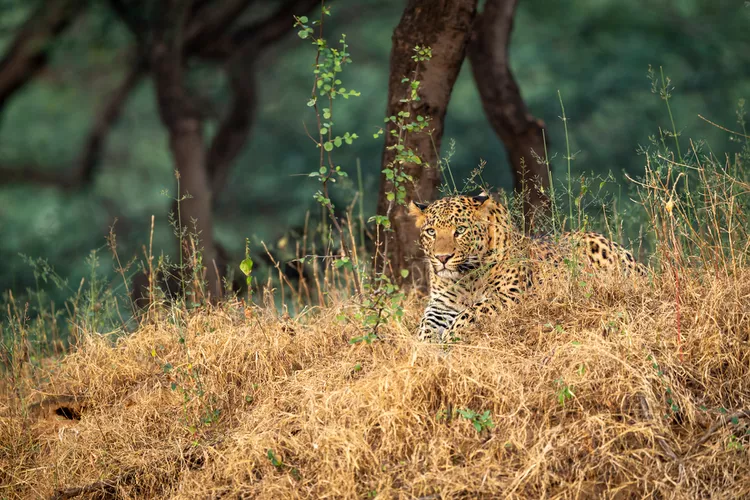India is a wildlife wonderland, home to some of the most endangered animals on the planet.
Unlike an African safari, where travelers are typically dropped straight into a private reserve, an Indian safari doesn’t skip the sights and sounds and smells that make India, India. Children playing cricket in dirt fields.
Here, wildlife rubs shoulders with the country’s 1.3 billion-plus population, letting safari goers sample everyday life by traveling through the heartbeat of the subcontinent.
With 106 national parks and more than 500 designated wildlife sanctuaries, outfitters are aplenty, and travelers need one.
India even has its own “big five”: the Bengal tiger, Indian elephant, one-horned rhinoceros, Asiatic lion, and Asiatic leopard.

Wild East
These can’t-miss Indian destinations showcase a swath of unique wildlife.
Jhalana Leopard Reserve
Less than four miles from Jaipur International Airport, more than 30 leopards roam this 13-square-mile forest on the edge of Rajasthan’s biggest city. With no competition for food, sightings of Jaipur’s famous residents are frequent, with plenty of deer and boar and blue bulls to be eaten.
For bonus wildlife kicks, glamp with rescued elephants and camels at Dera Amer (from $399), a luxe conservation camp on the outskirts of Jaipur in the foothills of the Aravalli range.
Sasan Gir National Park
The only lions in the world outside of Africa, the Asiatic lion, live on Western India’s Gujarat Peninsula near the Arabian Sea coast. Numbers have steadily increased since being on the brink of extinction at the turn of the century, with more than 600 of these majestic cats inhabiting the rugged hills and open savannas that lie across the Bay of Cambay from Mumbai. Due to its location, Sasan Gir is a less-visited park; to glimpse at the king of the jungle, visit between December and April for optimal viewing.
Corbett Tiger Reserve
India’s oldest national park (founded in 1936) sits 200 miles north of New Delhi in the state of Uttarakhand. Often considered the country’s best wildlife experience for being the first park to protect Bengal tigers, this idyllic Shangri-la in the Himalayan foothills is also home to hundreds of Indian elephants that can be seen combing its vast grasslands and crossing the Ramganga River.

Kaziranga National Park
In the far reaches of eastern India, four major rivers run through this undisturbed marshland deemed one of the finest wildlife refuges in the world. Wedged between Bhutan and Bangladesh in the state of Assam, Kaziranga is celebrated by UNESCO for its achievements in conservation — primarily for saving the one-horned rhinoceros, where two-thirds of the world’s population lives (an estimated 2,500 rhinos inhabit the park). With an abundance of water, travelers can birdwatch too (think: grey-headed fish eagles) and if luck falls your way, spot the highly endangered Ganges river dolphin.
On Safari
Family-owned operator Greaves Tours sets the standard for first-class service, offering tailor-made safaris throughout the Indian subcontinent. Their 15-night “Jungle Journey” itinerary goes through Ranthambore National Park, Pench National Park, and others, beginning in Delhi and ending in Mumbai.
Beyond safaris tour of India includes both culture and wildlife with stops at the Taj Mahal and Agra Fort to go along with visits to Kanha National Park and Bandhavgarh National Park, two of India’s best safari experiences.

